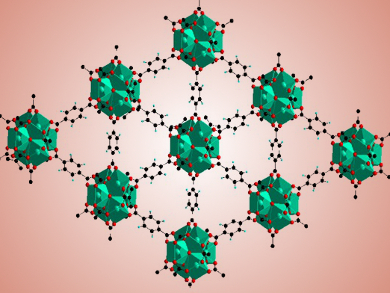Metal-organic frameworks (MOFs) are promising materials with many potential applications, including gas capture/storage/separation, catalysis, drug delivery, optics, luminescence, and magnetism. However, MOFs still have some disadvantages in terms of stability and performance compared to other nanoporous materials used in industrial applications.
Patricia Horcajada and co-workers, Institut Lavoisier, Versailles, France, have investigated a ZrIV-based porous MOF series with UiO-66 topology, a structure with high chemical and thermal stability. Using time-resolved energy dispersive X-ray diffraction (EDXRD), they looked at the influence of dicarboxylate linkers on this series. The researchers found that differences in terms of solubility and pKa of the linkers could have a significant impact on MOF crystallization kinetics, rate constants, and activation energies.
Further studies of MOF crystallization could lead to a better understanding of the reaction process and optimization of the synthesis conditions. In the future, the team hopes to gain more information on MOF formation and crystallization by combining theoretical models with in situ and ex situ methods.
- Impact of the Nature of the Organic Spacer on the Crystallization Kinetics of UiO-66(Zr)-Type MOFs,
Florence Ragon, Hubert Chevreau, Thomas Devic, Christian Serre, Patricia Horcajada,
Chem. Eur. J. 2015.
DOI: 10.1002/chem.201406119




